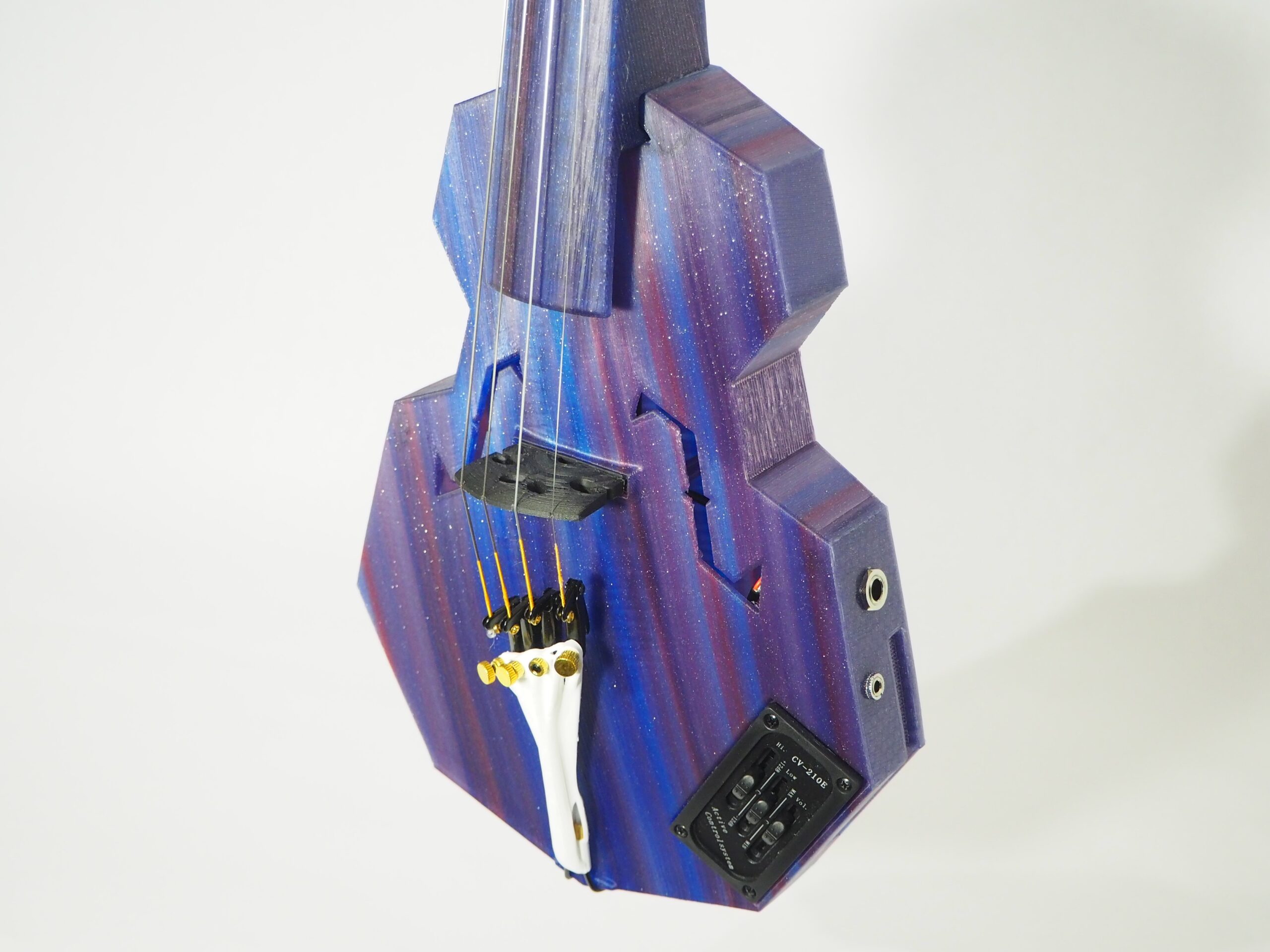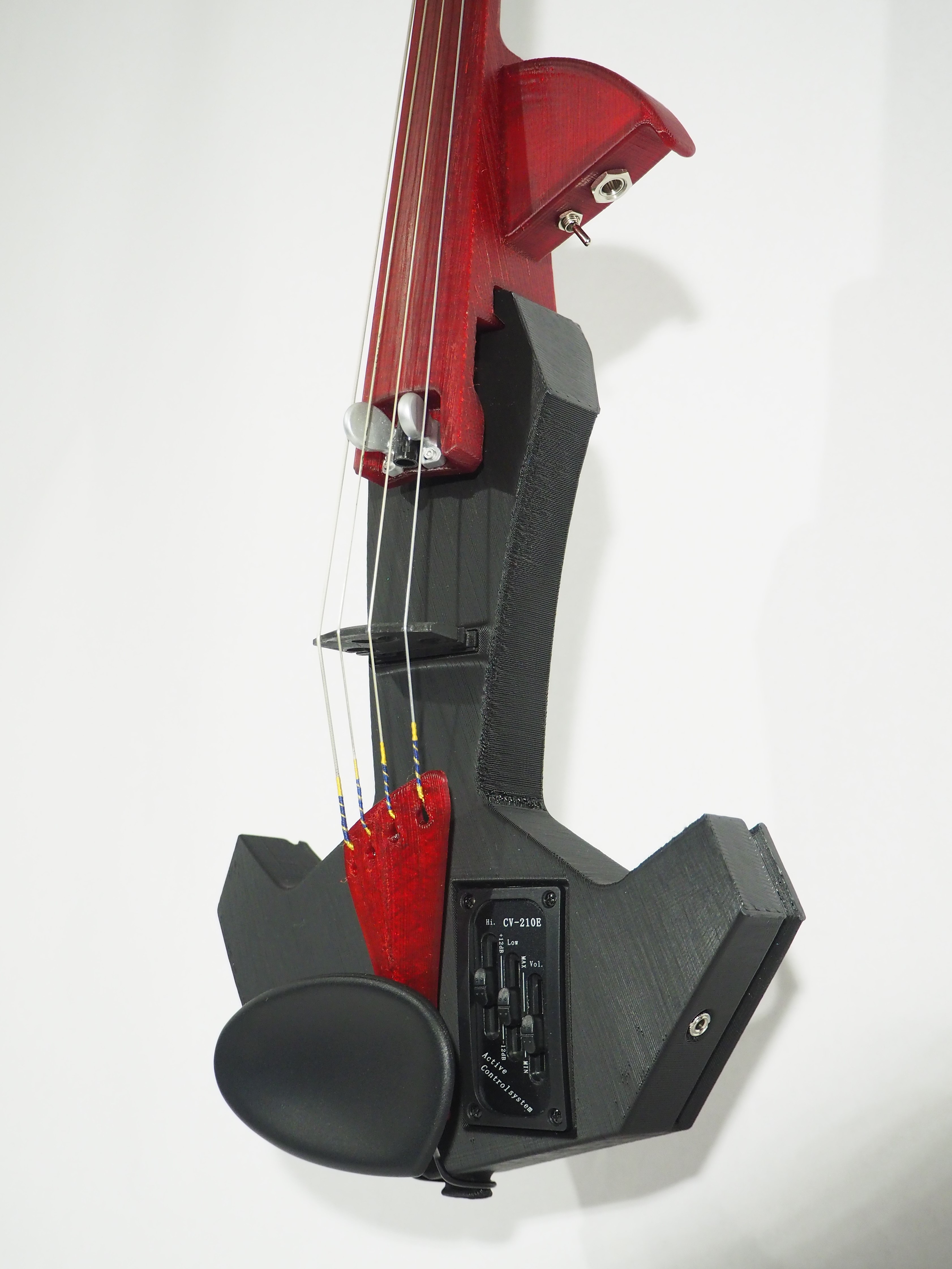
Most Modular Fiddles are great to play, but lack volume and projection when compared to a traditional violin. Making your Modular Fiddle an electric 3D printed violin is a natural solution!
Some of the earliest feedback I got on the Modular Fiddle went something like this “Oh, this is actually pretty good! If it were electric I might want one.” Here are the different options you have to make an electric 3D printed violin.
There are three categories for electric Modular Fiddles. Solid-body electric, acoustic-electric body, and augmented acoustic-electric.
First let’s talk about the low hanging fruit — augmented acoustic-electric.
Option 1: Augmented Acoustic-Electric
What I mean here is that you can add a pickup to any Modular Fiddle, in the same way that you can add a pickup to a standard acoustic violin. With this option, you can have great acoustic performance with the latest acoustic body design but also get a good signal from your 3D printed electric violin. It’s also just easy. This is a great option and I definitely recommend it!
I have two pickups that I have used with great results. One is the KNA VV-3 pickup, which is slotted into the bridge and the output is attached to the side of the body. Here it is installed on a five string viola.
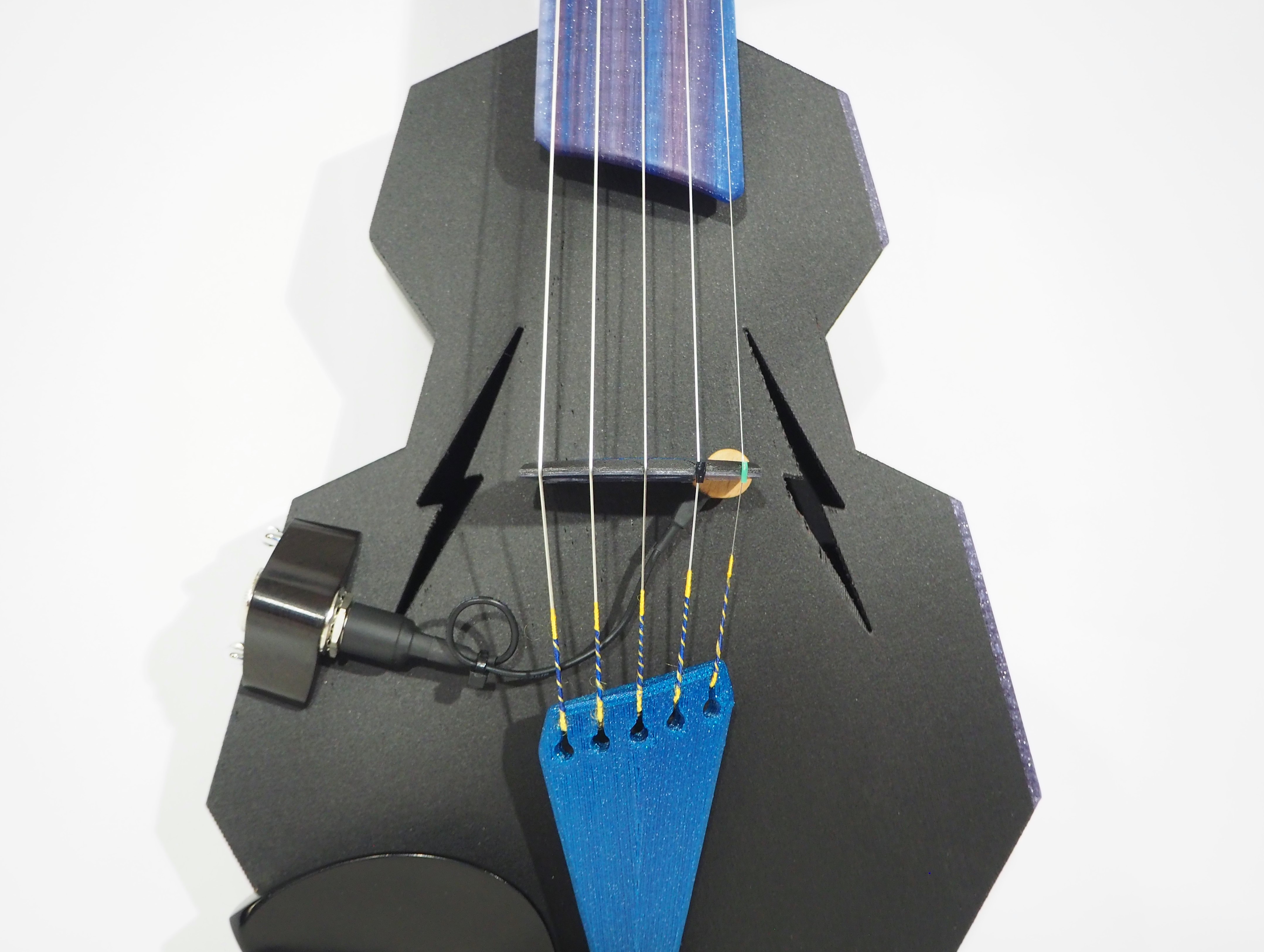
You could also use the VV-2, which adds on-board volume control.
Another option that offers a stronger signal and better tone is the Realist Copperhead pickup. I used this on my Viola da Gamba build and was blown away by the sound quality and power of the signal. It’s a very sensitive and impressive pickup. Here it is installed on the Gamba.
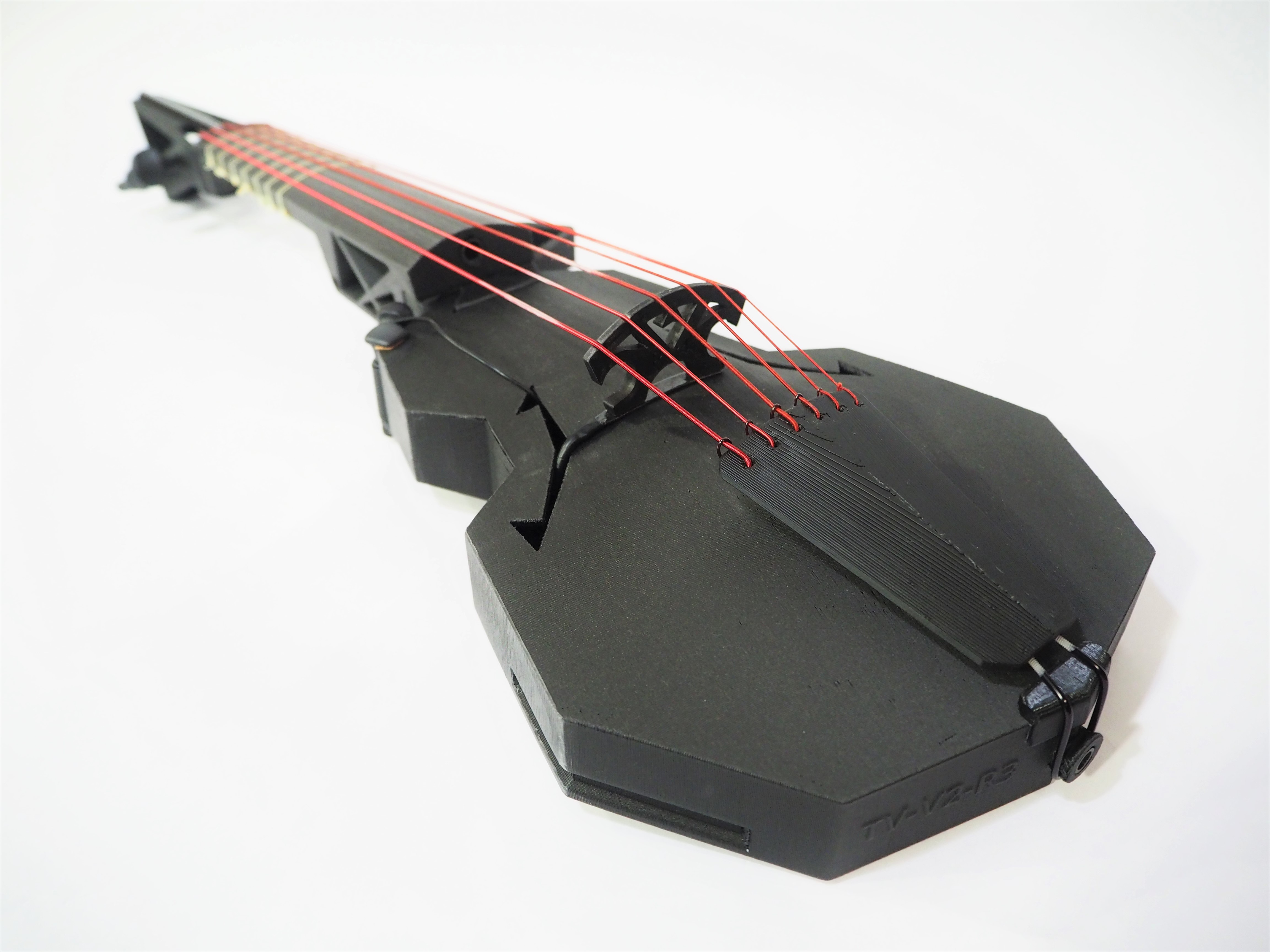
If these pickups are a bit expensive or if you would like more on-board control of your amplified signal, you might consider building a Modular Fiddle with a dedicated acoustic-electric body.
Option 2: Use a Low Cost CV-210E Pickup
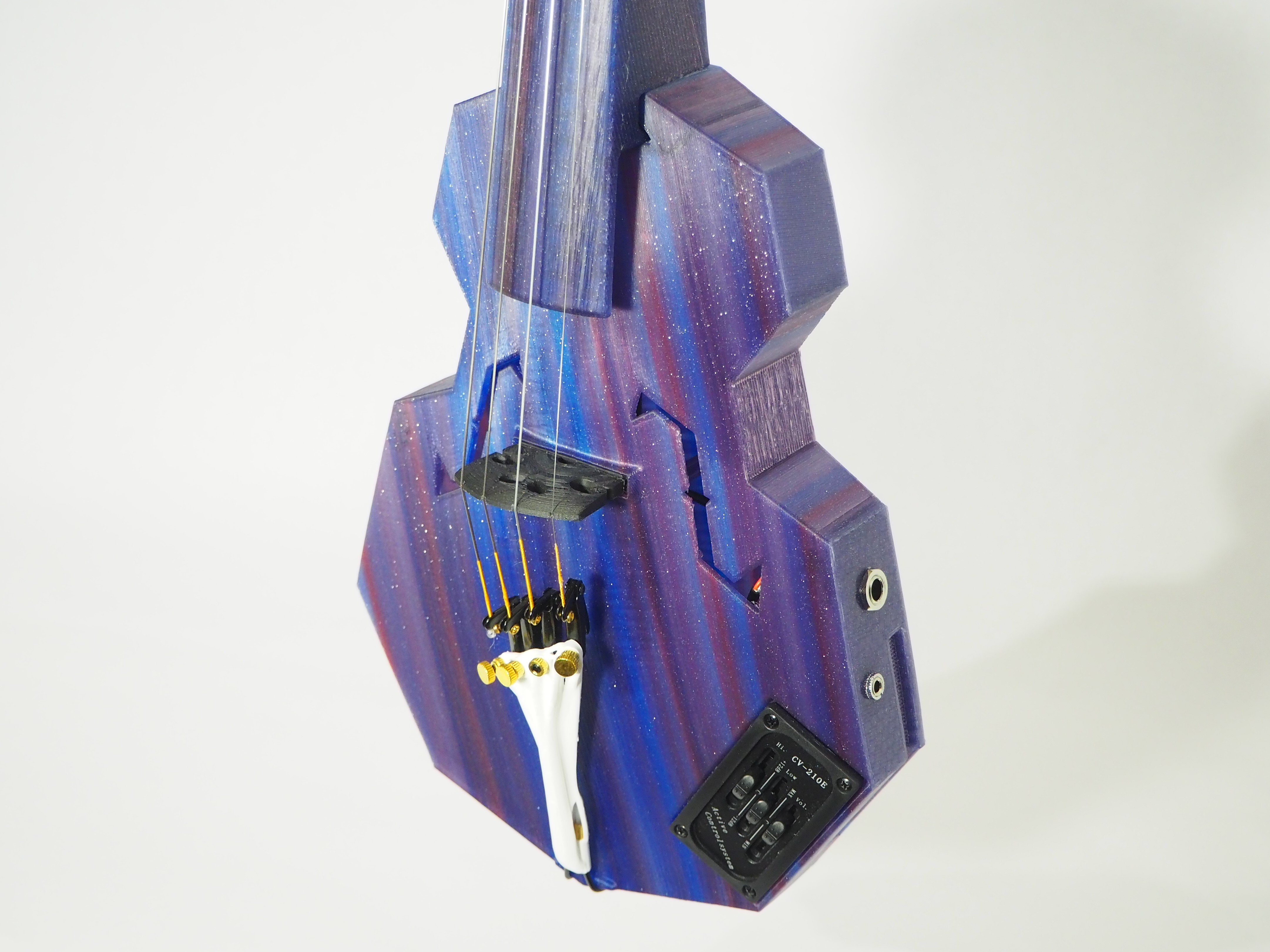
If you are looking to go low-budget with your build, this is the option for you. The CV-210E pickup includes an on-board preamp (battery required) that boosts the piezo output, so you can be confident you’ll get a strong signal. I previously sold these as a kit option, but I have found them to be unreliable and there are some setup constraints that don’t mesh well with the design.
There is a 3D file for both an acoustic-electric as well as a solid body design that uses the CV-210. Here’s the solid body:

3D files for the acoustic-electric and solid body that accept this pickup are available in the free design package. They are only available for V2 builds and will not be further developed. I will also no longer be providing these pickups in kits. You can find the CV-210E on AliExpress or other online sources.
Pro tip — the connector on the CV-210 from the pickup to the controller board is pretty awful. I’m told you can solder it direct to the board, but I have not done this myself.
Option 3: Performance Quality Dedicated Body
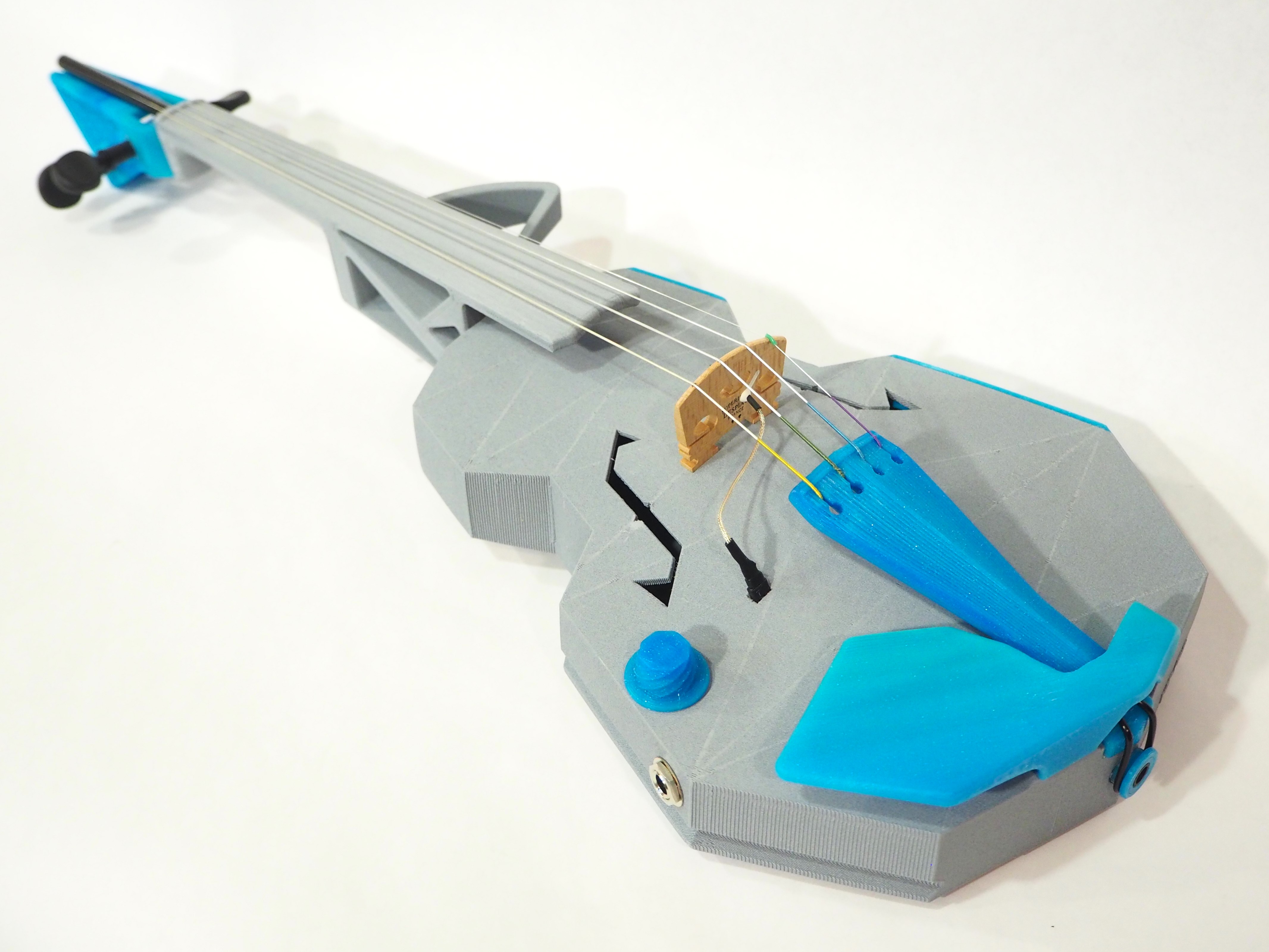
This is the option I use for all of my commissioned electric builds. The build, above, is for violinist Grace Youn. The acoustic-electric or solid-body electric bodies are designed to accept a volume potentiometer and permanent output jack. Then there is a quick-disconnect plug that fixes to the instrument to allow easy connection and disconnection of the pickup.
The Realist or VV-3 mentioned, above, will work great with this option, but you will need to cut and solder the leads. I am getting great sound using the LR Baggs violin bridge for acoustic-electric and the Starfish bridge for solid-body electric. Whatever pickup you choose, the quick disconnect allows you to easily swap pickups or bodies, keeping the modularity of the Modular Fiddle.
For the potentiometer, you need to use the Alpha Mini Pot. Standard size pots may not fit, especially in the solid body. Almost any output jack should fit just fine, though.
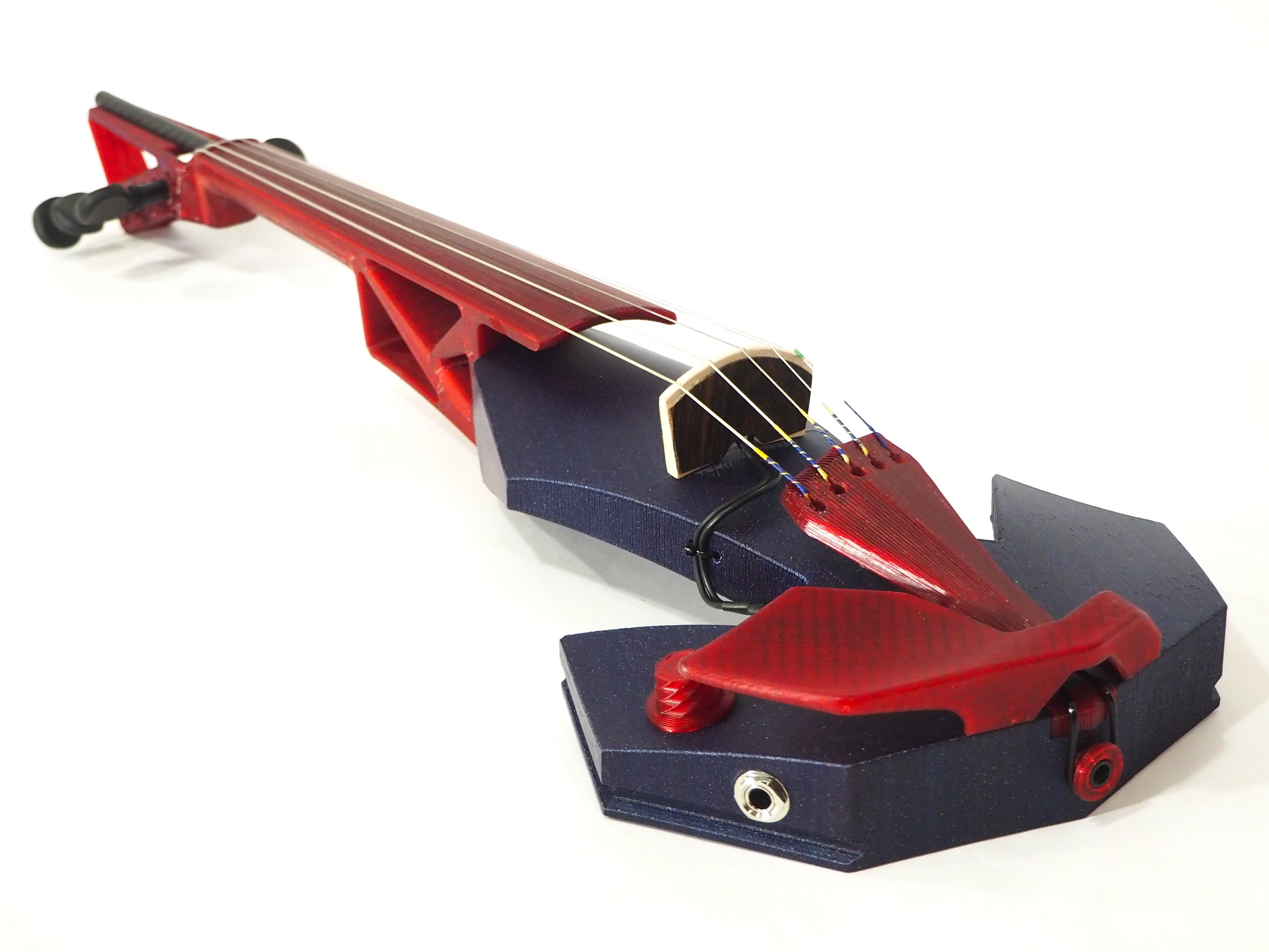
Build up a solid-body electric if you’d like a more quiet practice instrument, or if you want to play loud with distortion. You can also swap bodies if you’d like to try both.
Another Option: Magnetic Pickups in the Neck
This is highly experimental, but I do have these sweet magnetic pickups I got for the EEV Arrow, and I designed a neck that can hold them. You have to use the right strings, but if you would like to try this I am happy to sell you the sensors and send you the print files. The neck on the solid body, above, is shown with the magnetic pickups. They don’t work with the octave strings on that build, but they do work very well with the bottom shelf D’addario Preludes. The sensors are quite expensive, coming in at about $400 for a pair. Contact us if you’re interested.
Forthcoming Experiments
In the coming months I will be working on several new electric options and will continue to refine some of the options shown here. I’ll keep this post up-to-date with the latest!
Meanwhile you can purchase kits to build up your own Modular Fiddle. If you would like to commission a custom instrument, please get in touch! You can dm me on Instagram @dsp39, use the contact page, or send an email to David@openfabpdx.com.

